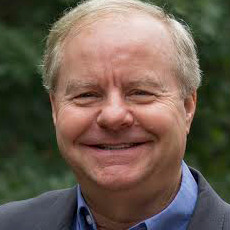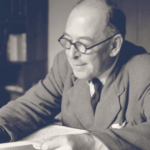A beacon of hope for troubled teens.
It’s not for nothing that there’s a 40-foot-high lighthouse on the Orlando campus of the House of Hope, with a prayer room on the first floor.
The ministry’s key verse is Matthew 5:16: “Let your light so shine before men, that they may see your good works and glorify your Father in heaven.”
The House of Hope has been a beacon to troubled teens and their families since 1985, when Sara Trollinger heeded a call from the Lord to start this remarkable youth outreach.
A junior high school teacher for 25 years, Sara was also instructing at the juvenile detention center in Orange County, Florida. “The same teens would come and go,” she recalls. “We could not even mention Jesus. It was like a revolving door.”
Tired of watching kids ruin their lives with sex, drugs and rebellion, she launched the Central Florida HOPE telephone ministry. “Almost all the calls were from distraught moms and teens,” she says. Then, the Lord told her to start a residential program for girls, which became the House of Hope.
A non-denominational, not-for-profit, Christ-centered residential program, House of Hope “offers hurting teens, ages 13-17, a place to find hope and healing in a loving, supportive environment and be reconciled to their families.”
The power of prayer.
With $200 and five people praying, she got it off the ground with the help of some modern-day miracles.
She found two old houses in a drug-infested area of Orlando and wrote a grant request to the Edyth Bush Foundation for $95,000. The owners lowered the price to that amount when they saw what she had planned and accepted a $200 down payment with the understanding that the full amount was due at closing.
The very next day, Sara got a letter from the foundation approving the $95,000 grant. “The homeowners gave us back the $200,” she says with a laugh.
She got the facility’s first beds from the jail and painted the iron frames pink for the girls who were the first clients. The roof leaked, and she had it fixed. The contractor called and told her that it cost $1,725, and that they were going to come by the next day to be paid. “I went into my office and there was a check on my desk for that amount.”
After they opened the houses, three volunteers immediately came down with flea bites. So, Sara went in and invoked Luke 10:19: “Behold, I give you the authority to trample on serpents and scorpions, and over all the power of the enemy, and nothing shall by any means hurt you.” She commanded the fleas to leave – and they did, faster than you can say Bug-Be-Gone.
“We needed a TV, so we prayed for one. The next day, a van drove up with a new TV in it. Another time, we prayed for cheese. The next day, there was a 50-pound round of cheese on the table. It was one miracle after another. On Thanksgiving, we had nothing because we had used up all the food, and three cars drove up from a church with big bags full of food.”
When the state unveiled a plan to take the property for Interstate 4 in 1993, “We had 18 girls at the time. A man from the state asked us, how much do you want for it?” I said, ‘Oh, $2 million. He came back with a check for that amount. We stayed a couple of more years. Then the Lord said it was time to take boys. So, we found a place on 36th street, on a peninsula with nothing but orange and grapefruit trees, and one little house.”
When she approached the property owner, it turned out to be a woman who recalled that Sara had spoken at her Baptist church. The woman accepted the offer, and House of Hope used the $2 million to build a 14-building compound for both boys and girls with a chapel, dorms, gym, classrooms and offices. And the lighthouse.
There has been no shortage of success stories.
“In 33 years we never had a teen who had not been given the Gospel,” Sara says. “Even the good ones run away. Our first boy who graduated ran away seven times. Now he lives in Massachusetts, is married with two kids and runs a couple of businesses. He has spoken at our dinners.
“There was a girl whose father abused her. She graduated with an A average and joined the Army. Now she runs a counseling center.”
With support from many donors, including the Timothy Plan, House of Hope continues to grow and “our assets are over $3 million now,” Sara says. “In 33 years we have always ended in the black.”
In 1985, President Reagan dedicated Epcot Center, and while in Florida, wrote a personal check for $1,000 to the House of Hope. In 1990, Mr. Reagan and his wife Nancy visited the House of Hope and made a video. The Reagans were impressed that House of Hope “had never taken a penny from the government,” Sara recollects.
Nor has the ministry ever compromised its mission.
After Sara gave a five-minute presentation during a congressional hearing on faith-based initiatives, another ministry leader was asked if he would hire a Muslim, and he said yes. When she was asked, however, she said, “Absolutely not. We are unabashedly a Christian organization.”
She also recalls learning that “United Way gave us money, then we found out they were supporting people we didn’t agree with. We said, ‘we don’t want your money anymore.’ We were told nobody had ever done that. After that, our giving went up.”
As the program has grown, so have opportunities for outreach. In 2000, a National House of Hope opened, and Houses of Hope in several other cities became affiliated in 2002 with the Orlando facility as the model. Sara, who also serves on the board of the National Coalition Against Pornography, began traveling with Women of Faith, bringing along some teens who have benefited from HOH. The program also partners with the American Association for Christian Counselors.
The Houses of Hope directors meet with Sara twice a year and attend conferences featuring experts on various forms of addiction. A conference last summer featured baseball great Darryl Strawberry and his wife who spoke about drug addition, a condition that plagued Darryl until he gave his life to the Lord.
When parents inquire as to whether their child can be admitted, the House of Hope counselors review family history and pray with them. “We do triage counseling, like EMTs,” she says. “EMT’s check hearts to see if they’re alive, and we check their hearts to see if they’re saved.”
She adds, “The streets and Institutions don’t tuck ‘em in at night. But we do at House of Hope –literally tuck them in, pat them on the head, pray with them.”
The campus has a Christian multi-phase program, residency for boys and girls, Christian coaching and discipleship, weekly parenting classes, individual and group prayer ministry, teaching in living skills and activities. An accredited school, Hope Academy, offers an Accelerated Christian Education curriculum and a high school diploma with transferable credits.
The parenting classes are very important because the House of Hope sees family restoration as a key to recovery. Parent-child conflict is “usually where the problems start,” Sara says. “The parents lose control and don’t know what to do. We’re turning the hearts of the children to their parents and the parents’ hearts to their children.
“Parents come to the class in tears. They tell us, ‘Never thought I’d have my son back or my daughter back.’”
For more information on the House of Hope.
A writer for Timothy Partners, Ltd. He is a regular weekly columnist for The Washington Times and Townhall.com and is frequently published by AmericanThinker.com, DailyCaller.com, OneNewsNow.com, and others. He has authored the following books: “A Strong Constitution: What Would America Look Like If We Followed the Law” (D. James Kennedy Ministries, 2018), Invested with Purpose: The Birth of the Biblically-Responsible Investment Movement, and A Nation Worth Fighting For: 10 Steps to Restore Freedom.







